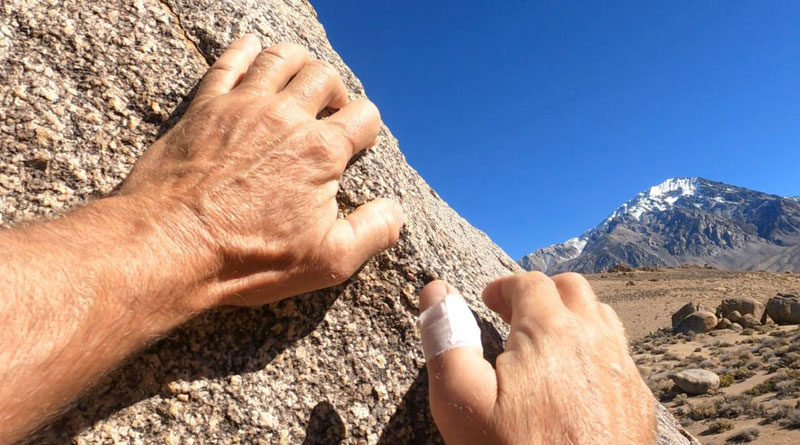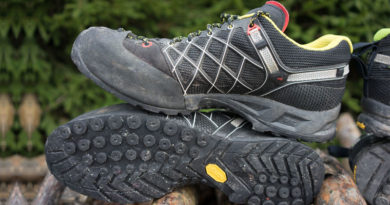Why Do Climbers Tape Their Fingers?
Rock climbing is an exhilarating and challenging sport that requires a great deal of physical strength, endurance, and mental focus. A strong grip, which puts a lot of strain on the fingers, is one of the most important aspects of climbing. Many climbers tape their fingers to protect them from injuries and to improve their grip. In this article, we will look at the benefits of taping, how to tape your fingers properly, and how taping can help prevent and recover from common finger injuries. We’ll also go over alternative finger protection techniques and other tips for keeping your fingers healthy and strong for climbing.
Benefits of Taping
Taping is a common practice among climbers that can provide several benefits to help improve performance and prevent injuries.
Protection from injuries such as cuts, blisters, and abrasions
The primary advantage of taping is that it protects against injuries such as cuts, blisters, and abrasions. Climbing frequently involves gripping rough surfaces, which can cause skin damage to the fingers. The taping creates a barrier between the skin and the surface, which aids in the prevention of these injuries.
Support for the fingers to prevent strains and sprains
Taping can provide support for the fingers in addition to protection. Gripping and pulling on holds repeatedly can put a lot of strain on the fingers and increase the risk of strains or sprains. Taping can help to support the fingers and prevent such injuries.
Enhanced grip through increased friction
Another advantage of taping is that it improves grip by increasing friction. The tape can roughen the surface of the fingers, allowing climbers to grip better and climb more efficiently. Taping can also absorb sweat and improve grip in slippery conditions.
Absorption of sweat to improve grip
Taping can help absorb sweat and improve grip. Sweating can make climbers’ fingers slippery, impairing their ability to grip the climbing surface. Climbers can help absorb moisture and improve their grip by taping their fingers. Taping can also keep sweat off the climbing surface, making it slippery for other climbers.
However, taping is not a substitute for good hand hygiene. Climbers should continue to wash their hands on a regular basis and keep them as dry as possible to avoid excessive sweating. Climbers can also use chalk to absorb sweat and improve grip, but too much chalk can dry out the skin and cause cracking or other skin problems.
Protection of calluses from tearing or becoming painful
Taping calluses can keep them from tearing or becoming painful. Calluses are a natural reaction to repeated friction on the skin, but they can cause pain and discomfort if not protected. Taping can cushion calluses and keep them from tearing or becoming too painful to climb on.
How to Tape Fingers
Taping your fingers for climbing can be done with just a few simple steps. Here’s a basic guide to taping your fingers for climbing:
- Choose the right tape: Climbing-specific tape is best, but medical tape or athletic tape can also work. Make sure the tape is flexible and durable, and consider the width of the tape depending on the size of your fingers.
- Cut the tape: Cut a length of tape that is about 2-3 inches long, and then cut that in half lengthwise to create two thinner strips.
- Wrap the base of your finger: Start at the base of your finger and wrap one of the strips of tape around it, overlapping each wrap slightly until you reach the top of your finger.
- Wrap the second strip: Take the second strip of tape and wrap it around your finger, but this time wrap it in the opposite direction of the first strip. Overlap each wrap slightly until you reach the top of your finger.
- Secure the tape: Once you reach the top of your finger, use a small piece of tape to secure the ends of the strips to each other.
- Repeat for other fingers: Repeat the process for any other fingers you want to tape.
- Adjust as needed: Adjust the tape as needed to ensure a comfortable and secure fit. You should still be able to move your fingers freely, but the tape should provide some support and protection.
It’s important to note that taping techniques can vary depending on the individual and the specific injury or issue being addressed. If you are experiencing pain or discomfort, it’s always best to consult with a healthcare professional before taping your fingers.
Common Injuries and How Taping Helps
Climbing can put a lot of stress on the fingers, and injuries are not uncommon. Taping can be an effective tool in preventing and recovering from common finger injuries. Here are some of the most common finger injuries in climbing and how taping can help:
Pulley injuries
Pulleys are the small tissue bands that keep the tendons in place as they pass over the bones in the fingers. With repeated gripping and pulling motions, these can become strained or even torn. Taping can help prevent these injuries by providing support and reducing pulley stress. Climbers can stabilize the pulleys and keep them from becoming strained by wrapping the tape around the base of the finger and over the knuckles.
Cracked skin
Cracked skin can be painful and make climbing difficult. Taping can aid in healing by acting as a barrier between the skin and the climbing surface. Taping can also keep the skin moisturized and prevent new cracks from forming. Climbers can protect their skin and allow it to heal by wrapping it in tape around the affected area.
Other common finger injuries
Sprains, strains, and blisters are also common climbing finger injuries. Taping can help with injury recovery by providing support, protection, and cushioning. Climbers can relieve stress on the injured finger and allow it to heal by wrapping tape around it. Taping can also help prevent blisters by reducing friction on the skin.
Note: It should be noted that taping is not a substitute for proper hand care and injury prevention. Climbers should also work on developing finger strength and flexibility, taking breaks as needed, and seeking medical attention for serious injuries. Taping can be an effective tool for injury prevention and recovery, but it should be used in conjunction with other injury prevention techniques.
Other Finger Protection Techniques
Taping is just one of the many techniques climbers can use to protect their fingers. Here are some other finger protection techniques that climbers can use:
- Finger sleeves: Finger sleeves are thin, stretchy tubes that can be worn on the fingers to provide additional protection and support. They can be worn alone or in combination with taping to provide extra cushioning and support.
- Gloves: Climbing gloves can also provide additional protection for the fingers. They can be especially helpful in preventing blisters and reducing friction on the skin.
Climbers must find the finger protection techniques that work best for them. Some climbers may discover that a combination of techniques works best for them, whereas others may only need to use one or two. Climbers can reduce their risk of injury and enjoy safe and comfortable climbing by taking the time to protect and care for their fingers.
Conclusion
In conclusion, climbing can be a demanding sport that places a lot of stress on the fingers. Climbers commonly use taping to protect their fingers from injuries such as cuts, blisters, and strains. Taping can also improve grip and absorb sweat, resulting in better performance. Taping can also help with recovery from common finger injuries like pulley strains, cracked skin, and blisters.
However, taping is not a substitute for proper hand care, injury prevention techniques, or seeking medical attention for serious injuries. Climbers should also work on developing finger strength and flexibility, taking breaks as needed, and using other finger protection techniques such as finger sleeves and gloves. Climbers can reduce their risk of injury and enjoy the sport for years to come by taking the time to protect and care for their fingers.




